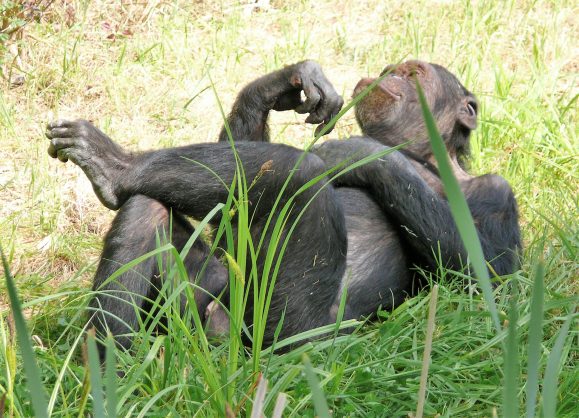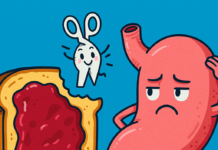Jars are terrible containers for most skincare products, yet the skincare industry uses them over and over and over again.
Some of the most expensive products from Kate Sommerville to Yves St. Laurent are in jars. I recently read an article titled “Most Expensive Skincare Products” and found that 8 out of the 10 products listed (ranging from $165-$1,050) were all in jars!

When you find out why this is terrible, you’ll want to kick everyone (including yourself) right in the face. Why? Because you’ll find out how much hard-earned money you’re flushing down the toilet.
Table of Contents
Short attention span summary:
- The “age-fighting” ingredients in about 99% of skincare products, are highly unstable and react (meaning they do their job and then become useless) when exposed to oxygen, sunlight, and heat.
- Every time you open a jar and expose those ingredients to oxygen, you’re ruining the expensive product you practically sold your first-born child for.
- Annnd… Every time you stick your dirty little fingers into the jar, you’re introducing bacteria into a moist, dark environment.
Keep reading for a more in-depth AND HILARIOUS (cuz I’m funny and also smart and cool and humble) explanation!
What causes aging and how skincare prevents it
Lesson #1: Proven causes of aging
There are two main (and generally agreed upon in the science and skincare community) causes behind the majority of aesthetic aging of the skin (wrinkles, spots, loss of elasticity, etc.).
They are:
- UV damage (the sun)
- Free Radical Damage
The first one is easy enough right? Limit sun exposure (although 10-15 minutes per day, depending on your skin coloring, is necessary for vitamin D production) and wear sunscreen so you won’t look like this lady when you’re 35:

The free radical part is a little crazier and more scientific, so I’m gonna have to lay down some information for ya. Prepare yourself some hot cocoa and let’s get to learnin’!
Lesson #2: Free radicals
Free radicals are these jerk types of atoms that are unstable and love causing damage. Using humans as a comparison, these guys are like the one jerk who gets way too drunk, causes fights, vomits red wine on your white carpet, and breaks your prized 5th grade soccer trophy at your house party.
Now picture a multitude of those drunken jerks in your body and on your skin.
Technically speaking, free radicals have unpaired electrons. They constantly scavenge around stealing electrons from other places to make themselves feel all zen and balanced. Kinda like how if you were missing a leg, you might go and try to steal some other person’s leg to balance yourself out. God, I hope not…
When free radicals steal electrons, they cause damage to other cells. Just like how you would cause damage to the poor schmuck whose leg you stole.

Free radicals are created by tobacco smoke, air pollution, UV rays, etc. But here’s the lame part: We make them ourselves simply by breathing, eating, and basically doing anything. Neat, huh? In certain circumstances, they seem to be beneficial and necessary for our health (more on this later).
I can’t decide whether to love them or hate them!!! But how do you keep those jerks in check you ask?
Enter, the antioxidants.
Lesson #3: Antioxidants
These little dudes are super-human kamikaze fighters. You can find them in a lot of “super foods” like blueberries, dark chocolate, pomegranates, etc. You can also find them in like 99% of skin creams, serums, toners, lotions, and sometimes even in face-wash (though, they’re basically worthless in face wash since they don’t stay on your face).
Antioxidants are basically the cops who remove the drunken jerk from the party. Except they don’t just arrest the guy, they literally sacrifice their lives to keep the drunken dude from f’ing up your party.

To review: Free radicals damage our cells by stealing electrons whenever and wherever they can.
Thankfully, antioxidants have extra electrons they’re willing to give up to save your cells from damage. Now that’s that I call a real B.F.F.! By doing this, they neutralize the free radical, forcing it to chill out with its newly paired electrons.

So what the heck does this have to do with jars?
Sooo… oxygen has two unpaired electrons, two little lone rangers desperately crying and searching for a mate.

To calm its little heart, a molecule of oxygen is usually found latched onto something else, often another oxygen molecule, forming the dude our lungs are very familiar with, O2. However, a lot of science can happen causing these perfectly paired friends to be separated. The separated oxygen molecules become free radicals, a.k.a. reactive oxygen species.
This process is totally natural and happens all the time. As I mentioned earlier, we need this process to happen in some cases. For example, these angry guys can channel their abandonment issues into killing harmful bacteria by calling immune cells into action.
Since we are always surrounded by oxygen and, therefore, free radicals, we amass too many of these little a-holes and require the assistance of antioxidants.
To summarize: oxygen is a highly unstable/weirdo molecule that, while we need it to live, can cause crazy damage all over the place in certain forms. It is sometimes even called “The paradox of aerobic life.”
As we’ve already learned, antioxidants react with free radicals and then become useless. Therefore, if antioxidants are stored in a jar, every time you open that jar and expose the product to oxygen, a good amount of the antioxidants will react with the oxygen… and then then their job is done!

The more you open the jar, or the longer you leave it open, the more skincare ingredients you’re destroying. Some argue it’s just the top layer you destroy, so no biggie. But I’m sorry, the top layer of a $100 eye cream is one layer too many!
And on top of that, you’re introducing your own bacteria (by sticking your dirty finger in the jar) into a moist and sheltered climate where it can grow into millions of monsters that crawl all over your face! Many skincare brands have tons of preservatives to keep this from happening, but a lot of “natural” skincare brands do not.
What can you do?
Say goodbye to any type of skincare product in a jar. I don’t care how cute or how pretty they are, say goodbye.
Buh-bye waste of money! Buh-Bye bacteria growth!

If you want to finish your current jarred products, there are some best practices to prevent contamination or waste:
- Wash your hands before touching the product
- Remove the product with a utensil of some sort
- Remove the product as quickly as you can
- Do not leave jars unopened on your counter
What to look for in packaging
Now keep in mind, you’re always going to expose the product to some amount of oxygen before it reaches your face. However, you want to limit that exposure as much as possible by avoiding jars.
- Bottles with pumps, spouts, or some sort of funnel/tube that lessens the exposure of the product to the elements.
- If it’s in glass, make sure it’s darkly-colored glass to protect the product from light exposure.
- In regards to plastic packaging, you don’t want sheer or clear, you want solid and opaque.
(Seriously you guys, the jar thing is out of control. I just googled “Skin Care Products NOT in Jars” and got thousands of images of products in jars. Why?)
Anyhoo, some great examples of good packaging:



So now you’re smarter and ready to save your money! Say goodbye to the jars and hello to better-looking skin!
Ugh, that sounded like a commercial slogan.
References
http://www.ncbi.nlm.nih.gov/pubmed/8660387
http://www.vivo.colostate.edu/hbooks/pathphys/topics/radicals.html
http://www.vivo.colostate.edu/hbooks/pathphys/misc_topics/radicals.html
http://en.wikipedia.org/wiki/Free-radical_theory_of_aging
http://www.berkeleywellness.com/healthy-eating/food/article/how-antioxidants-work
http://health.howstuffworks.com/wellness/aging/aging-process/free-radicals-aging.htm
http://www.webmd.com/food-recipes/how-antioxidants-work1?page=1
http://www.paulaschoice.com/expert-advice/skin-care-basics/_/jar-packaging
http://news.psu.edu/story/141171/2008/08/18/research/probing-question-how-do-antioxidants-work
http://health.howstuffworks.com/wellness/food-nutrition/facts/antioxidant3.htm











